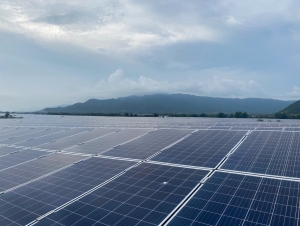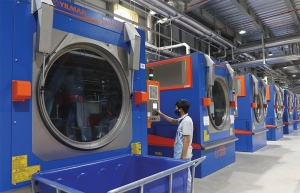High-tech personnel to drive competition
The government announced at a recent National Assembly (NA) session that it would increase investments in education and training quality in the next few months.
“New programmes will be launched to drive human resources development, especially in high-quality personnel for priority and emerging sectors, including semiconductors, AI, and cloud computing,” a government report submitted to the NA stated. “Investments will also go towards expanding science, technology, innovation, and entrepreneurship.”
Under this plan, the government will synchronously implement mechanisms, policies, and solutions for related development, particularly in high-tech sectors.
 |
| High-tech personnel to drive competition, photo: freepik.com |
The government has committed to delivering breakthrough reforms, focusing on modernising vocational education, increasing staff quality, and enhancing vocational training. This will create the skilled labour necessary for a rapidly evolving market and meet the demands of Vietnam’s industrialisation.
In parallel, the government is also working to improve laws on science, technology, and innovation to meet new socioeconomic requirements. The NA will explore and draft amendments to four key laws covering science and technology, technical standards and regulations, product and commodity quality, and atomic energy.
To attract and effectively use investments in sci-tech, the government plans to encourage enterprises to establish and expand sci-tech development funds.
Minister of Planning and Investment Nguyen Chi Dung said, “These funds will support research, innovation, and technological advancement, particularly through partnerships with universities and research institutions, including joint research labs and technology incubation projects.”
He noted that public-private partnerships in sci-tech fields are also strongly encouraged.
The government’s large focus on further improving personnel quality as a foundation for economic growth is expected to boost high-tech investment and the nation’s overall competitiveness.
With over 38 million unskilled labourers, according to the Ministry of Labour, Invalids, and Social Affairs, Vietnam faces a significant skills gap. This shortage is critical as multinational corporations such as Apple, Dell, Foxconn, Pegatron, Nike, and Adidas increasingly shift their supply chains to Vietnam, recognising it as a promising investment destination.
“However, meeting these companies’ demands for high-quality workers remains one of the most pressing challenges,” Minister Dung said. “At present, collaboration between training institutions and businesses is inconsistent.”
The World Bank has noted that without substantial investments in tertiary education, Vietnam will struggle to supply skilled technical workers in sufficient numbers. A recent World Bank report on Vietnam’s startup ecosystem highlighted this challenge, noting a gap between educational institutions’ perceptions and employer needs.
“While 80 per cent of training institutions believe their graduates are prepared for entry-level positions, fewer than 40 per cent of employers agree, especially regarding positions requiring higher-level skills,” the report stated, referencing Vietnam’s low rank of 127th out of 140 countries in the 2021 Global Competitiveness Index for industry-relevant skills among university graduates.
Industry feedback to the World Bank indicated that while universities produce engineering and programming talent, many graduates lack the hands-on experience needed for emerging tech fields such as biotechnology, nanotechnology, and AI.
Last year, the Vietnamese government adopted key productivity frameworks, focusing on modernising the labour market and accelerating productivity growth to 6.5 per cent annually. The national programme on increasing labour productivity towards 2030 also sets a comprehensive reform agenda across ministries, prioritising productivity as a national goal.
Despite these goals, labour productivity growth was only 3.5 per cent in 2023, falling short of national targets. A lack of incentives for businesses and workers to invest in productivity has contributed to this shortfall, highlighting the need for an ecosystems approach. The International Labour Organization noted that Vietnam must be ready to embrace productivity-boosting factors like Industry 4.0, AI, new business models, and innovative financial instruments.
| Ramla Khalidi, resident representative United Nations Development Programme in Vietnam
Vietnamese firms have not yet succeeded in penetrating the supply chains of multinational enterprises operating in the country. Recent data shows that the import intensity of exports – meaning the share of imported goods and services in exports – is significantly higher in Vietnam (51 per cent) than in Malaysia and Thailand (35 per cent), India (20 per cent), and Indonesia (15 per cent). Furthermore, the import intensity of Vietnamese exports has steadily risen since 2000, while remaining relatively stable or even declining in comparison countries. This suggests that the anticipated technological spillovers and demand linkages between foreign and domestic firms have yet to materialise, leaving Vietnamese manufacturing largely confined to low value-added, labour-intensive operations. These trends indicate that Vietnam cannot rely solely on labour-intensive activities indefinitely. Similar to the transitions seen in Japan, South Korea, and China, Vietnam will need to develop higher value-added segments in both industry and services. Like other successful East Asian economies, developing Vietnam’s national technological capabilities is crucial. However, public spending on higher education and research in Vietnam remains low. Although spending is not a perfect measure of capacity, Vietnam’s low levels of research output remain a concern. Nguyen Hoang Bao Tran, national Assembly deputy Binh Duong province
In order for businesses and workers to have stable incomes, and to be able to adapt to rapid changes, I have three recommendations. Firstly, it is necessary to consider specific policies in vocational training, linked to the reality of labour quality, as well as the specific development of each locality. This will lay a foundation for the goal of training high-quality, high-tech human resources for production, business, services, and key sectors. Secondly, it is necessary to invest in modern equipment and machinery for teaching in vocational schools, and also to limit waste in training facilities. Thirdly, when it comes to unemployed workers, they just want to quickly find a new job to ensure their livelihoods. The current level of vocational training support funding is VND1.5 million ($62) per month and is valid for six months, which is too low compared to the training needs and long study time. The unemployed cannot ensure the financial capacity to participate in vocational training, so it is necessary to increase the level of support. |
 | Australia and Vietnam join forces to cultivate quality workforce for net-zero future Vietnam and Australia view the green economy as a vital area for cooperation, with Australia’s ambition to lead in renewable energy aligning with Vietnam’s focus on wind and solar development. |
 | High-quality workforce embedded in Ninh Thuan's renewable energy development Thanks to international cooperation and close collaboration with businesses, the quality of workforce training for the renewable energy sector is steadily improving, paving the way for Ninh Thuan to become a new renewable energy hub. |
 | Global education to improve quality of workforce Opportunities are emerging to bolster Vietnam’s capabilities to meet the nation’s demand for a high-quality workforce in order to achieve green and digital transformation targets. |
What the stars mean:
★ Poor ★ ★ Promising ★★★ Good ★★★★ Very good ★★★★★ Exceptional
Related Contents
Latest News
More News
- Dat Bike accelerates sustainable mobility (January 07, 2026 | 15:24)
- Innovation to support modern healthcare development (January 07, 2026 | 10:00)
- Six localities record double-digit growth as regional performance diverges in 2025 (January 06, 2026 | 18:00)
- E-commerce market undergoes transformation amid rising competition and regulation (January 06, 2026 | 17:54)
- Vietnam’s industrial output hits seven-year high in 2025 (January 06, 2026 | 17:47)
- GELEX’s credit rating outlook upgraded to 'Positive' by VIS Rating (January 06, 2026 | 16:49)
- Finance sector lays firm groundwork for 2026 after major reform (January 06, 2026 | 15:30)
- Vietnam’s seafood exports surpass $11 billion in 2025 (January 06, 2026 | 08:51)
- Vietnam GDP posts second-strongest growth since 2011 (January 06, 2026 | 08:35)
- Double-digit GDP growth within reach with shift to higher-value expansion (January 06, 2026 | 08:33)



 Tag:
Tag:


















 Mobile Version
Mobile Version